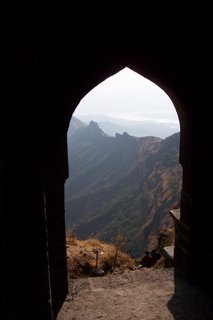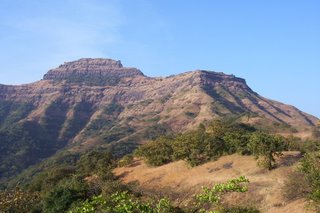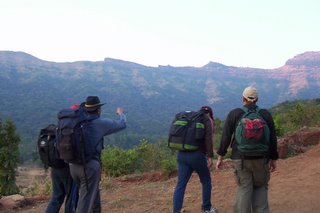Recently , I had a chance to listen to one of my senior collegues who is based in Hongkong. The topic of discussion was to understand the myth of developing economies of India and China and how these countries are different in thought process.
"We Indians , belive very heavy in the concept of destiny , god and how fortunes are delivered with a stroke of fate. This also means that sometime , we put our destint on these believes and do not act. Where as Majoroty of Chinese has no concept of god and the only philosphy which can be infleuncial is the Philosophy or logic of money. This brings very sharp focus in any chienese mind and the actions are driven to achive the singular objective. "
I think the focus part is very True . We Indians love to argue and take a long time to reach to a workable conclusion. To be in the race with China , we need razor sharp focus on executing and executing fast and taking quick decisions.
Enclosing an article from India Brand Equity foundation which gives more subjectivity to the argument .
http://www.ibef.org/india/indiachina.aspx
Summary :
The two countries have, however, followed two entirely different development models to reach their present positions.
Much of India’s recent success is driven largely by private enterprise. According to JP Morgan, listed Indian firms deliver a higher return on equity (RoE) than comparable companies in Hong Kong, Singapore, Korea, Taiwan, Japan and Malaysia or Hong Kong-listed Chinese firms. Remarkably, Indian firms combine high RoEs with Asia's lowest debt-to-equity ratios.
China, on the other hand, has had an FDI-driven, export-led model, which has effectively served as a substitute for domestic entrepreneurship. The most important difference between the two is that while China is a political economy where state intervention is still very high, India is the world’s fastest growing free market democracy.
Driving on the back of a manufacturing boom, China has grown at an annual average of 9.7 percent since economic reforms were initiated in 1978. India has followed a consensual democratic market model; GDP has expanded at 5.8 percent a year since the economy was opened up in 1991.
It is common to see products ranging from toys to electronic gadgets with a ‘Made in China’ label. The label, however, has a story behind it. Very few of these products are made by indigenous Chinese companies. On the other hand, India has its very own homegrown entrepreneurs, who will give it a long-term advantage over a China hamstrung by inefficient banks and capital markets.
The stability associated with India's growth model banks on its cultural experience and relaxed attitude towards the outside world, its cheap labour force, and its solid educational system. India's model is termed as more sustainable than the East Asian one as it helps develop more efficient corporates, healthier banks, more robust service industries and a bigger consumption base. As Dan Fineman concluded in the Far Eastern Economic Review in April 2004, “While China has won the sprint, India is training for the marathon.”
If India is in such a happy situation on the ground, one may well ask, why isn’t it showing in the comparative figures? The gap in GDP, savings rates and other benchmarks are still quite wide. The only answer to this lies in the dates when their respective markets opened up. India's economic reforms began only in 1991 more than a decade after China began liberalising. In addition, India has had to make do with a national savings rate half that of China's and 90 percent less FDI.
It is conventional knowledge that the foreign investment coming into China was directed by its wealthy diaspora. During the 1990s, more than half of China's FDI came from overseas Chinese sources. The Indian diaspora, in comparison, has been responsible for only 10 percent of foreign fund inflow into the country. Although, the Indians abroad may not be able to match their Chinese counterparts, they have a substantially more intellectual capital to contribute. In fact, recent news clippings are rife with reports of Indians coming back home. If China won the race to be the world’s factory with the help of its diaspora, India could use NRIs to become the world’s technology lab.
China needs to pay attention to educating more people. It has only 1.5 million college students, out of a total population of over 1.3 billion as against India's 3 million graduates, 700,000 post-graduates and 1,500 PhDs.
And one of countries may win the economic race. Analysts say it will take 10 years to decide on that. Or, both could win. As N.K Singh, Member, Planning Commission, said in his speech at the World Economic Forum, Davos, in January this year: “There is nothing noble in being superior. True nobility is being superior to your previous self”.
The Morgan Stanley report actually predicts a situation when the twain shall meet. This could happen in 10-15 yrs when India would have an increasing presence in manufacturing and China in services. Apart from the returns from their cost-effectiveness, the countries’ exports should rise from a combined total of 12 percent today to a possible 20 percent by 2010 and 30 percent by 2030, it says.
Saturday, January 28, 2006
Monday, January 23, 2006
Trekking lessons
Last weekend , I joined a bunch of enthusiast cousin in laws to trek in the majestic Sahyadris. The plan was to climb up Fort Rajgad - Shivajis first capital. The trek was supposed to be an easy one for the average trekker . But I being used to desk environements made it a quite a challenge and thorougly enjoyed it. The entire trek brought numerous thoughts to me and I am publishing some of them.
1. We still love to be materialistic and carry too much of excess baggage. Life should be like a trek and you should learn to carry only what you need to. We should make careful decisions on the baggage in our life and take very hard decisions to leave some of them behind. ( It is upto us to determine what that BAGGAGE is ........)
2. We are a tiiiiiiiiiinyyyyy component in this wonderful world and your self esteem and ego becomes useless when you are conforted with the majestic nature of mother earth. Climbing mountains gives you a very humble feeling. You are at mercy of the mother nature and it is upto you to take the right steps to survive. A wrong foot hold or slip of hand is all it takes you to come down 4000 ft and land the way you want. But one thing , even if you are falling down , the view below is spectacular :)
3. When you on a fort or any place of historic importance , feel the history. Try to get closer to the yesteryears and you will feel the spirits of the people who dwelled there. However , we being the fools what we are , we try to enjoy and sing and laugh like the baboons. We experienced this recently with a bunch a college kids from Pune fooling around and behaving like monkeys .
4. We dont pay attention to our bodies. We have a wonderful machine which can scale beyond our imagination. It is upto us to define its limits and it will scale them. Most of times , we dont allow it to take the challenge and we end up the way we are ... fat , overweight and with a stamina to climb 25 steps.... I learnt this hard way and was trailing behind almost every time , whether it was a climb or descent.
5. Survival on the fly.... We had carried tons of food on our back ( it was packed by our wives ... of course) and loved every bit of it. Morale : If you can carry your food , do it but also try to survive on what you get off the land . I know it is a hard way but , if you are camping / treking , it will be nice try to experiment for a couple of meals.
6. Potential of Maharashtra as trekking destination ..... We have not done enough to increase the awareness and accessibility to these wonderful places. A couple of forts here and there , but not enough. We all need to make an attempt on how we can make these treks attractive , charge for some basic amenities and made them available. I saw some organizations at Rajgad zeelously protecting the fort from vandalism . Somebody had commented that all the forts in Rajasthan are "female forts" whereas all the forts in Sahydadri are "male forts" ... ( For obvious reasons)
comments on these thoughts most welcome.
Sachin
1. We still love to be materialistic and carry too much of excess baggage. Life should be like a trek and you should learn to carry only what you need to. We should make careful decisions on the baggage in our life and take very hard decisions to leave some of them behind. ( It is upto us to determine what that BAGGAGE is ........)
2. We are a tiiiiiiiiiinyyyyy component in this wonderful world and your self esteem and ego becomes useless when you are conforted with the majestic nature of mother earth. Climbing mountains gives you a very humble feeling. You are at mercy of the mother nature and it is upto you to take the right steps to survive. A wrong foot hold or slip of hand is all it takes you to come down 4000 ft and land the way you want. But one thing , even if you are falling down , the view below is spectacular :)
3. When you on a fort or any place of historic importance , feel the history. Try to get closer to the yesteryears and you will feel the spirits of the people who dwelled there. However , we being the fools what we are , we try to enjoy and sing and laugh like the baboons. We experienced this recently with a bunch a college kids from Pune fooling around and behaving like monkeys .
4. We dont pay attention to our bodies. We have a wonderful machine which can scale beyond our imagination. It is upto us to define its limits and it will scale them. Most of times , we dont allow it to take the challenge and we end up the way we are ... fat , overweight and with a stamina to climb 25 steps.... I learnt this hard way and was trailing behind almost every time , whether it was a climb or descent.
5. Survival on the fly.... We had carried tons of food on our back ( it was packed by our wives ... of course) and loved every bit of it. Morale : If you can carry your food , do it but also try to survive on what you get off the land . I know it is a hard way but , if you are camping / treking , it will be nice try to experiment for a couple of meals.
6. Potential of Maharashtra as trekking destination ..... We have not done enough to increase the awareness and accessibility to these wonderful places. A couple of forts here and there , but not enough. We all need to make an attempt on how we can make these treks attractive , charge for some basic amenities and made them available. I saw some organizations at Rajgad zeelously protecting the fort from vandalism . Somebody had commented that all the forts in Rajasthan are "female forts" whereas all the forts in Sahydadri are "male forts" ... ( For obvious reasons)
comments on these thoughts most welcome.
Sachin
Subscribe to:
Comments (Atom)



